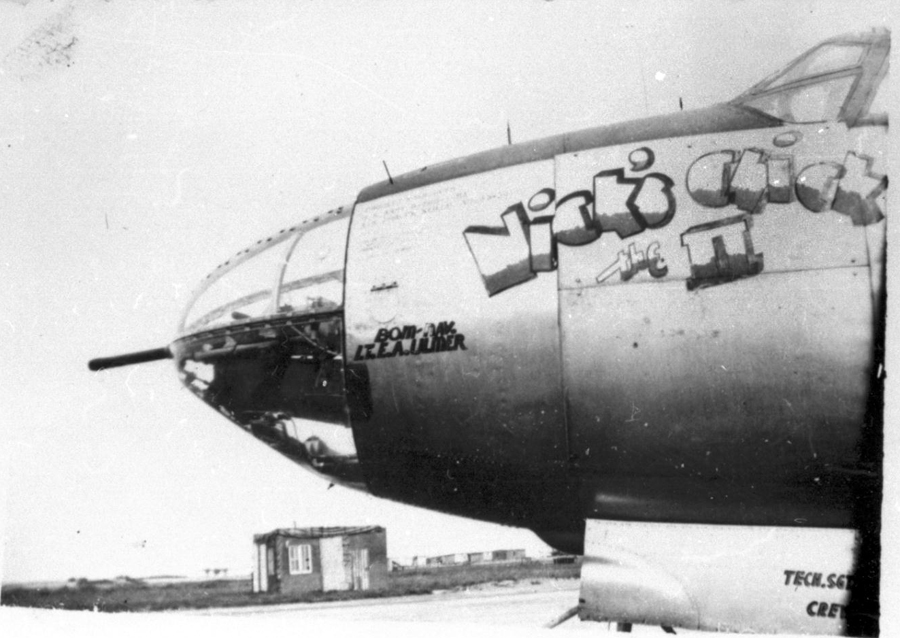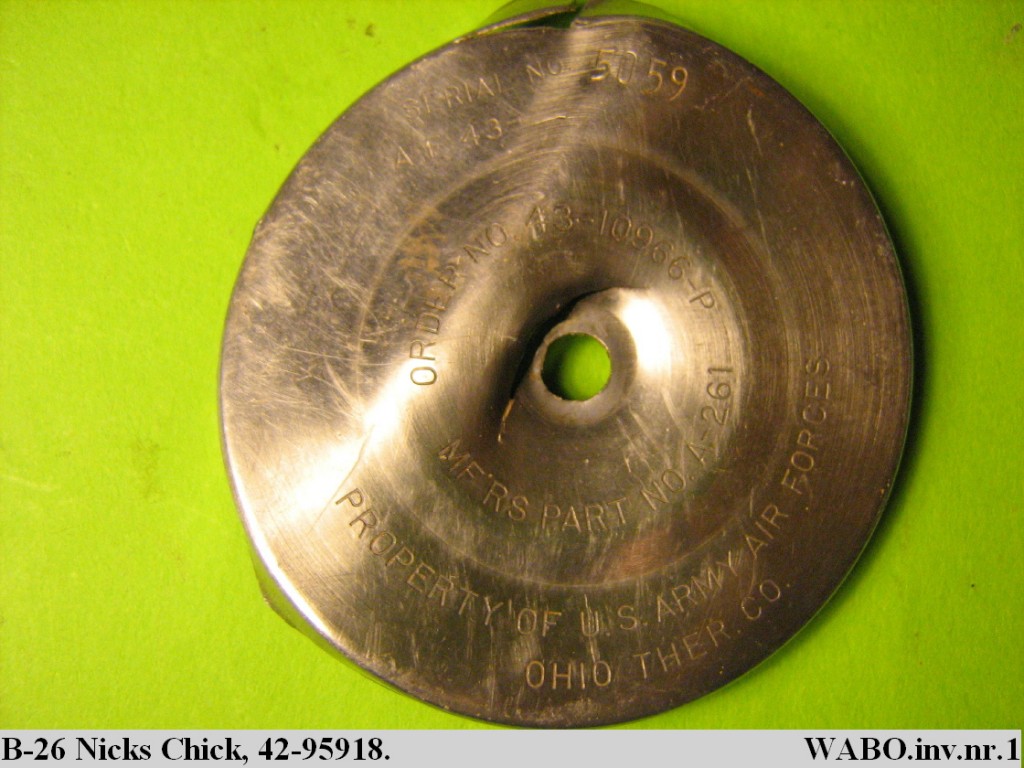Battle for Arnhem Bridge
|
On September 26, 1944, all of the First Parachute Brigade of the British First Airborne commanded by Col. John Frost were either killed or captured in the battle for Arnhem Bridge. Col. (now General) Frost was captured, wounded at the north end of the bridge with less than 100 of his men. This epic battle is described in Cornelius Ryan’s book A Bridge Too Far. It was decided that use of this bridge would be denied the Germans, and on October 6, thirty-six B-26s of the 344 Bomb Group attacked the bridge. The bridge over the lower Rhine River, almost 2000 feet long, consisted of a 500′ suspension span over the river, the remainder supported by concrete abutments was over a mud flat. The suspension span was the target. The bridge was not destroyed in this attack, and one ship was shot down. It happened that the ship lost was “Nick’s Chick”, the plane assigned to my crew. While planes were assigned to individual crews, they did not have exclusive use of it. On this mission, First Lt. Herbert Moore and his crew were flying “Nick’s Chick” but our regular radio operator, Sgt. Norman Truax went along to try out some new radio equipment. Three members of Lt. Moore’s crew were later reported to have been seen in a Belgian hospital. When I reported to the 344th Bomb Group, 495 Squadron, on April 22, 1944, on a replacement crew, bombing was by boxes consisting of three flights– a total of 18 planes. Only the lead and deputy lead carried a bomb sight. When the lead ship dropped his bombs, each plane following dropped theirs. As the bombs were released at pre-set intervals, this created a bomb pattern a hundred feet or more long depending on the drop interval. The advantage was that a large pattern gave a better chance of hitting the target. However, if the lead bombardier was off, the efforts of 18 planes and crews were wasted. The decision was made to bomb by flights and the number of targets destroyed increased dramatically. In May, 1944, I was assigned to Capt. Nichols’ crew and, after considerable practice bombing, we were designated a lead crew. On October 7, the group again attacked Arnhem Bridge. We led the second flight. At the briefing we were told that 67 guns defended this target. The first flight was led by 495 Squadron CO Col. Jens Norgaard arid Group Bombardier Major James Brady. they hit the north end and approaches to the bridge but did not knock it down. As can be seen in the strike photos, our first bomb hit short of the bridge, allowing the heaviest part of the pattern to develop on the suspension span. Each plane was carrying four 1000 lb. bombs which destroyed the target. I noted a 35 second bomb run in my diary. A commendation from the Commander of the 344th Bomb Group, Lt. Col. Robert W. Witty, states: “On 7 October 1944, Capt. David C. Nichols was flight leader of the second flight in an attack on the heavily defended railroad bridge at Arnhem, Holland. The cool manner in which this bombing team performs its duty under the most adverse conditions is commendable and reflects the finest traditions of the Army Air Forces.” On December 2, 1944, we bombed Endorff, Germany, a fortified town. Both Sgt. Dollahan and I were seriously wounded and the plane heavily damaged by flak on the bomb run. We managed to complete our bomb run and hit the target. Even though we lost an engine, Capt. Nichols nursed the plane to an emergency landing at a deserted German airfield near Rheims, France. The plane was so heavily damaged that it was never flown again. Source: http://www.costoffreedom.org/The%20Final%20Chapter%20of%20the%20Battle%20for%20Arnhem%20Bridge.html |




